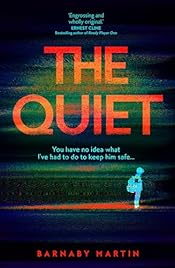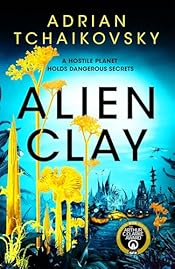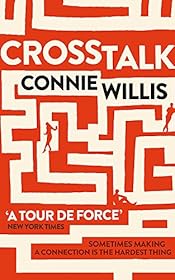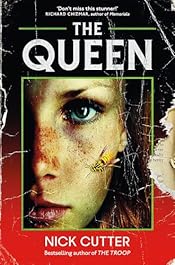Orphan Planet by Madeehah Reza
Posted in My ParSec reviews, Reading Reviewed, Reviews published in ParSec, Science Fiction at 12:00 on 15 December 2025
Luna Press, 2025, 187 p. Reviewed for ParSec 14.

At the start of this novella Elif is the sole inhabitant of the apparently desert planet Maoira-I. At twelve years old she has hitherto known only the companionship of the AI, VAS-H, her Vital Auxiliary Support: H-unit, and her knowledge of other humans is derived solely from the films and shows available to her on screen.
Contact from Commander Isabel Aremu of the Interplanetary Mission, based on Polaris, who addresses Elif as Warden, comes to her out of the blue, as does the task she is assigned of growing, or attempting to grow, plants to see if Maoira-I might be a suitable future home for humanity. The Mission is on an indefinite space flight fleeing something unspecified back on Earth. VAS-H retrieves the seeds Elif will need, seeds she had not known were there, from the base’s storage freezer.
Part One centres on Elif via both a third person narrative tightly focused on her unfolding experiences and the log entries VAS-H asks her to compile. While these are not the reflections of an unreliable narrator they are those of one without knowledge of the full picture. Helping to fill in those gaps for the reader there are also two italicised sections dealing mainly with the consequences for Commander Aremu on Polaris of the Mission having to admit that Elif exists and its failures regarding her. This leads to Aremu’s replacement as contact by the much less sympathetic Lieutenant, later Commander, Julian Bishop.
In the meantime Elif uncovers a buried Transporter vehicle on the surface and learns to drive it while Maoira-I’s long-term climatic variations begin to manifest themselves.
Part Two makes a step change. Mission operative Rokeya Khan, whose grandfather Latif was on the original team to land on Maoira-I, has set off on her own to get to the planet and find out what happened. Her arrival shocks Elif but they learn to work together.
Rokeya’s presence is the catalyst for the discovery of what became of the original crew, one of whom, naturally, but against all protocol, must have been pregnant.
It also crystallises Elif’s feelings towards the rest of humanity and towards the only home she has ever known.
There are some caveats to this. The premise does stretch credibility a bit. Could an infant human really thrive under only the influence of an AI and old videos? Could she retain sanity even? Could the original expedition genuinely have been forgotten by the Mission for twelve years?
But Reza has written this well. She captures Elif’s initial ingenuousness and growing confidence. The claustrophobic atmosphere of an isolated environment comes across, as does the slightly sinister sway of an AI companion.
This is an impressive long form debut.
The following did not appear in the published review.
Pedant’s corner:- shrunk (x3, shrank,) CO2 (several times. It’s CO2,) “wherever the fleet of ships were” (wherever the fleet … was,) fit (fitted,) “than several millions” (than several million,) “about to reach a crescendo” (you don’t reach a crescendo, you reach its end,) sunk (sank.) “Rokeya’s opened her mouth in shock” (Rokeya opened her mouth.)
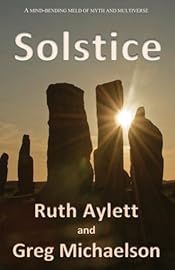
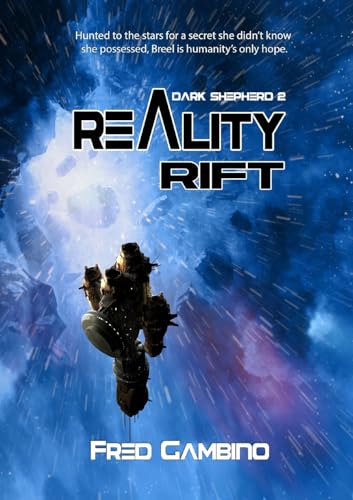 I recently sent off to Parsec magazine my review of Solstice by Ruth Aylett and Greg Michaelson, a book which I picked up* at the first
I recently sent off to Parsec magazine my review of Solstice by Ruth Aylett and Greg Michaelson, a book which I picked up* at the first 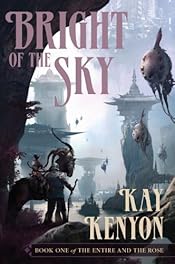
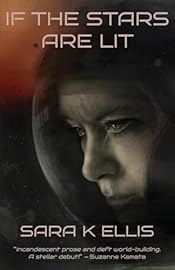
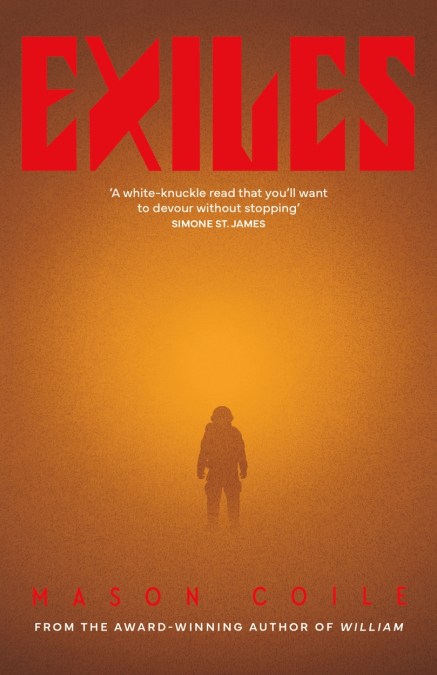 The latest book I have received to review for
The latest book I have received to review for 